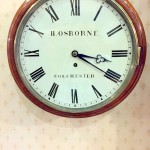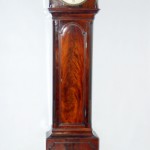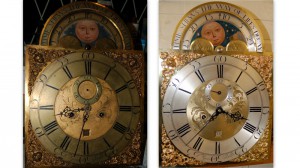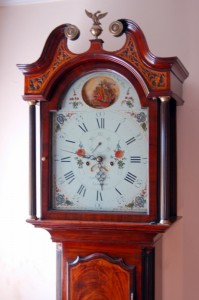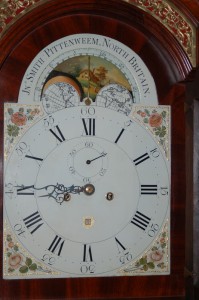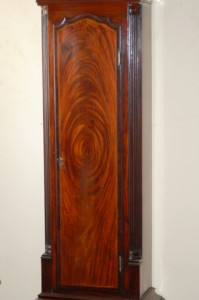
Clockmaking in the UK has a long and celebrated past right from the set-up of the Worshipful Company of Clockmakers. Commonly called the Clockmakers Company this was founded way back in 1631 when King Charles I set it up by Royal Charter.
Oldest Horological Institution in the World
This is the oldest surviving horological institution in the world. Its moto is ‘Tempus Rerum Imperator’ , Time is the ruler of (all) things. Throughout the nearly four centuries since then one clock maker stands out in a group of some amazing clock makers. The question is who is the most famous of all clockmakers? The person would be the person known as ‘The Father of English Clockmaking’, the great Thomas Tompion. Thomas Tompion was Master of the Clockmakers Company in 1704.
Amazing Works of Tompion
Thomas Tompion produced some amazing works, often quite diverse and some very complex. It is definately the fact individuals like this raised the standards of clockmaking throughout the horological profession. This meant England was the foremost country for the production of clocks in the 18th century.
Thomas life and work is studied in a book by R.W.Symonds. Anyone interested in reading more about this great clock maker I would ask your library to try and source you a copy of this great book.

Start of the Journey
The journey to be known as the most influential and most respected clock maker throughout history starts from the tiny hamlet of Ickfield Green in Northill, Bedfordshire. Thomas was the eldest son of Thomas Tompion , a blacksmith and his wife Margaret. Thomas was baptized on the 25th July 1639. Some 32 years later he was admitted into the Clockmakers Company as a ‘Brother’ on 4th September 1671.
Apprentaship Dues
He paid his fee for doing so of 30 shillings. Very little is known about these growing up years or where he learnt his formidable clock-making skills. It is assumed though he was taught through working with his father at home in his blacksmiths.
Father was a Blacksmith
Blacksmiths at the time were known to have made the ‘Great Clocks’, or what we know today as turret clocks for places like churches. It is also assumed Thomas had loved the idea of working directly in clocks. This can be seen by the fact his father who died in 1665 gave his tools to his younger son James. We can take from this Thomas already had acquired his own tools in clock making and his father tools were not necessary. If we look at many other famous clock makers like Harrison many of them are self taught.
Water Lane Clock Business
We do know for a fact that in 1674 Tompion moved into Water Lane where he continued his clock-making business for the rest of his years.It is amazing the rise to fame of Thomas, even from the very start of his new business he met people like Dr. Robert Hooke.
Dr Robert Hooke
Hooke was a leading gentleman of the day specializing in physics and mathematics. He was a great intellect and undoubtedly a real inventive genius. Hooke commissioned Thomas Tompion to make a quadrant for the Royal Society.News must of quickly spread of Tompions talent. The working relationship of Tompion and Hooke was the real catalyst for this massive rise in fame and prestige for Tompion.
Technological Advancements
I am of the belief these two collaborated closely on a number of great technological advancements. For instance in 1675 Hooke asked Tompion for help in proving he and not Huygens had invented the spiral spring balance for watches. The result ended up that Tompion was the first to actually apply this spring balance to a watch. Many people see Tompion as a maker of larger clocks but it was the success in watches with the huge demand at the time that really brought dividends.
Royal Observatory Clocks
Tompion’s name was mentioned in all the important corridors of the day. Just two years after he moved into Water Lane he was commissioned by Sir Jonas Moore to build two clocks for the new observatory in Greenwich. These clocks were of a year duration and very accurate. These clocks were testament to this clock-makers talent. Another famous clock maker George Graham joined Tompion at his Water Lane premises. In 1696, he married Tompion’s niece Elizabeth. Edward Banger also joined Tompion between 1701-08 but when Banger left from 1710-1713 when Tompion died, his clocks were signed ‘Tompion and Graham’.

Westminster Abbey Burial
Thomas Tompion and George Graham have the honour of being both buried in Westminster Abbey and Tompion’s graveyard can still be seen today. He left his business and most of his estate to George Graham and his wife. Graham continued Tompions high standards. In the book by R.W.Symonds I believe there is an account where someone comes into Tompions shop in Water Lane with a watch. Tompion looks at it, goes into the back and smashes it with a hammer. He remarks this is not a proper Tompion and he gives him a genuine watch in return.
Fakes Around Even in the 18th century
This shows even way back then Tompion was so famous people were copying his work. There are lots of clocks signed Tompion but always be careful in buying to check the clock is a genuine item. Genuine clocks by Tompion are rare and often fetch in the hundreds of thousands of pounds. If you would like to contact us about acquiring a Thomas Tompion or any other famous clock-maker please visit here for antique clocks for sale.




